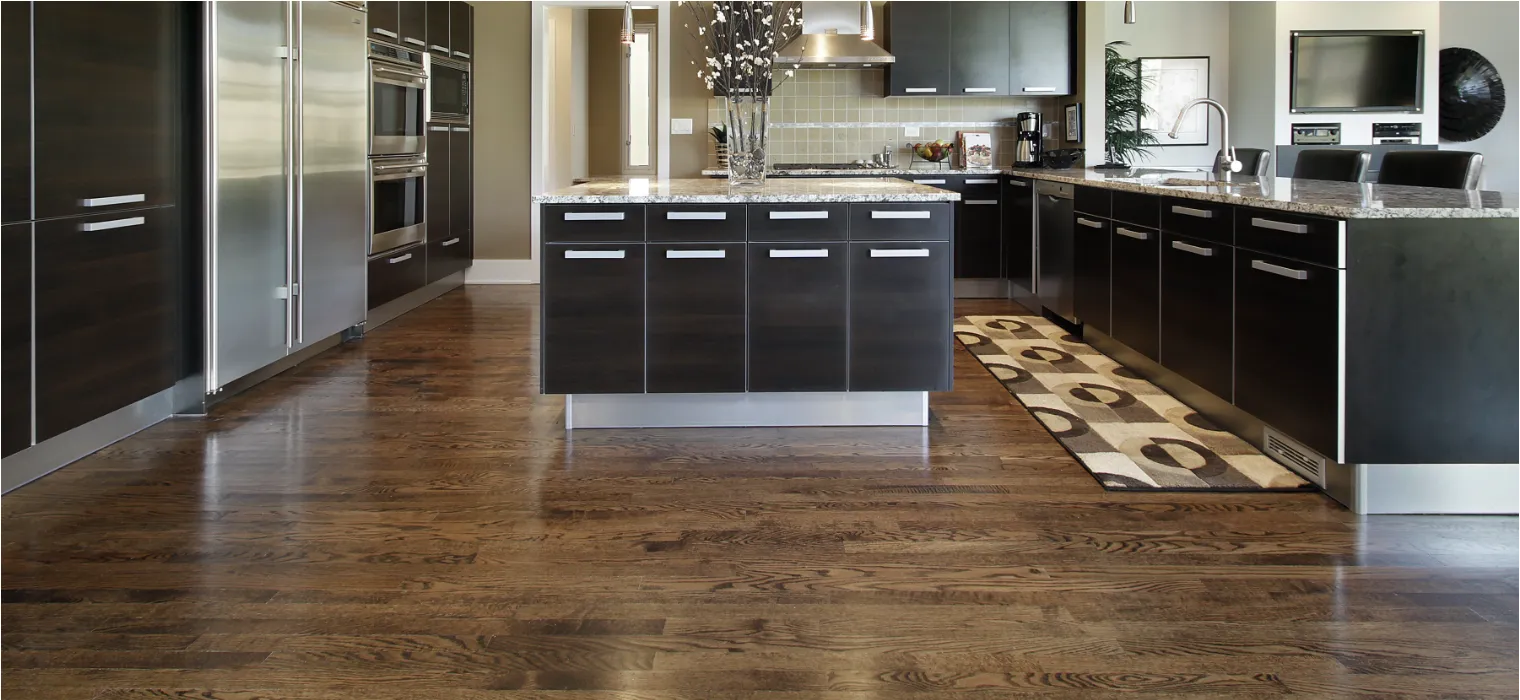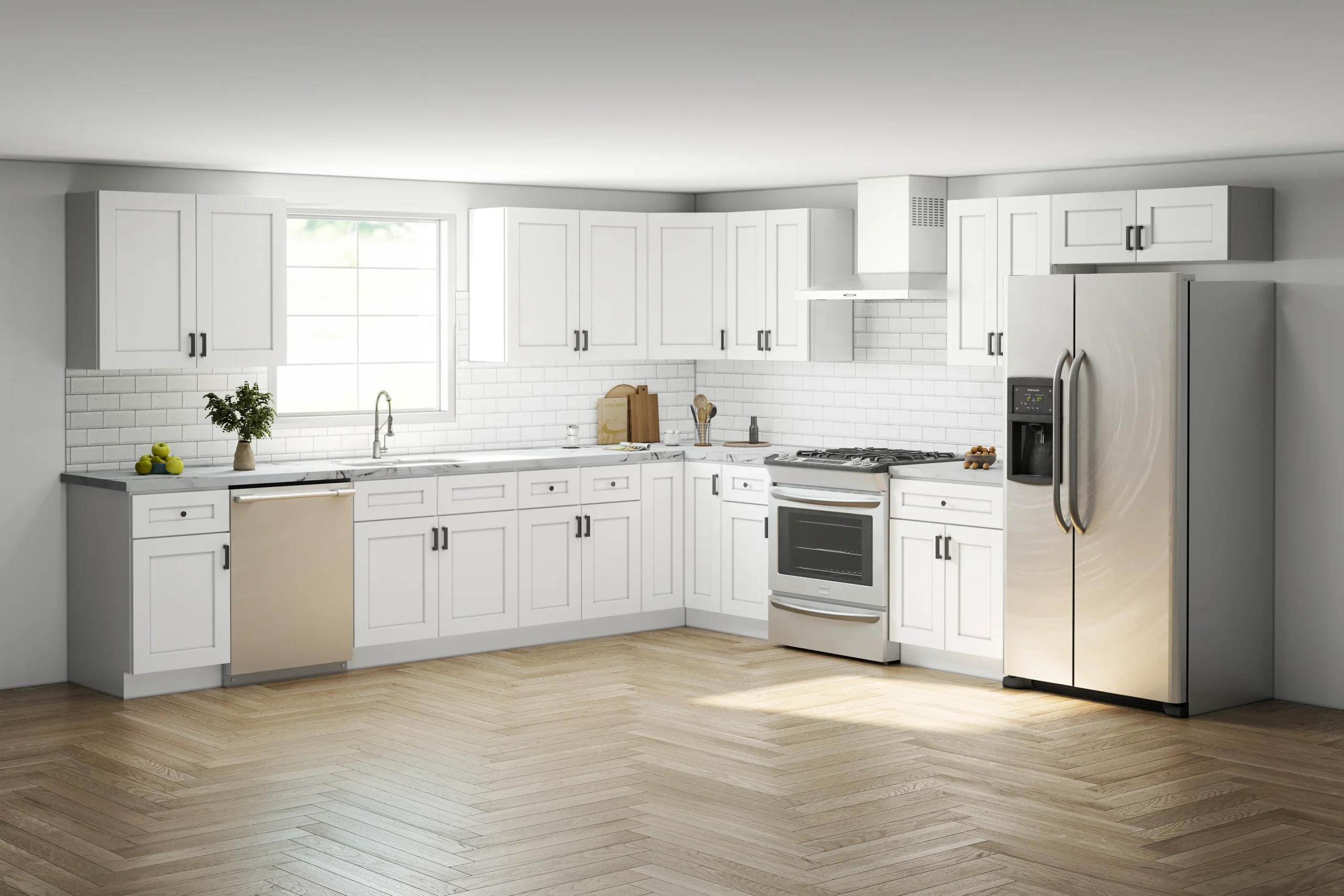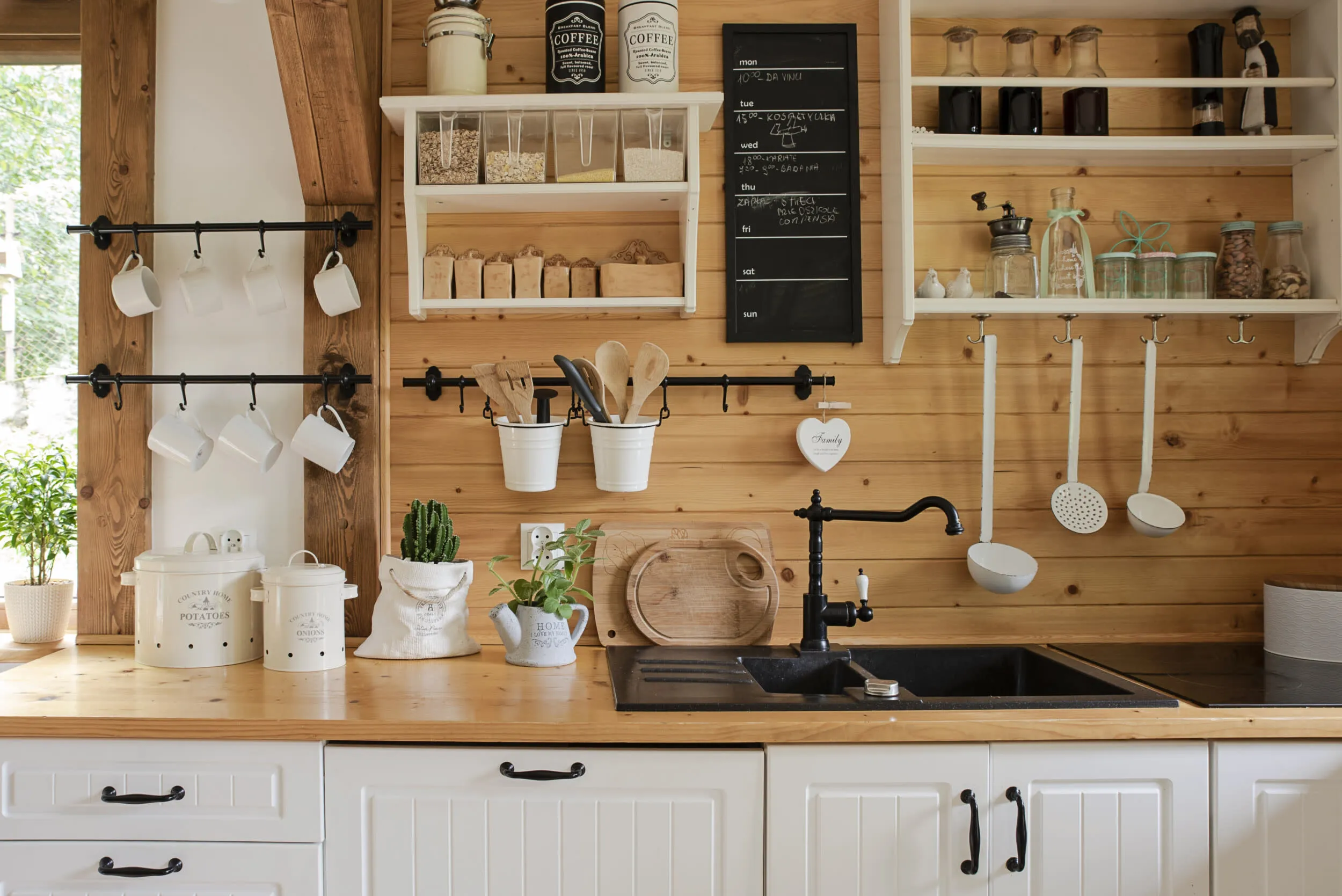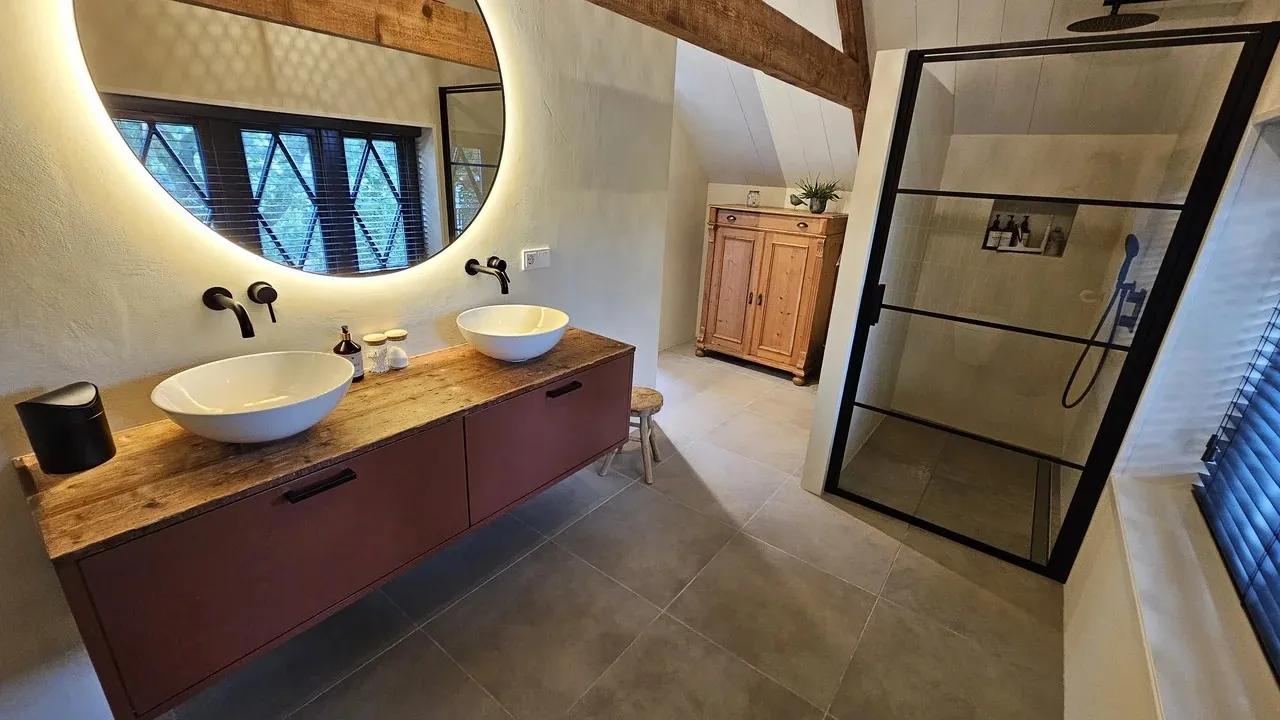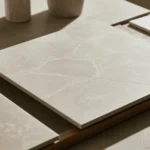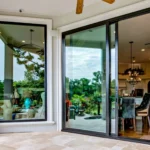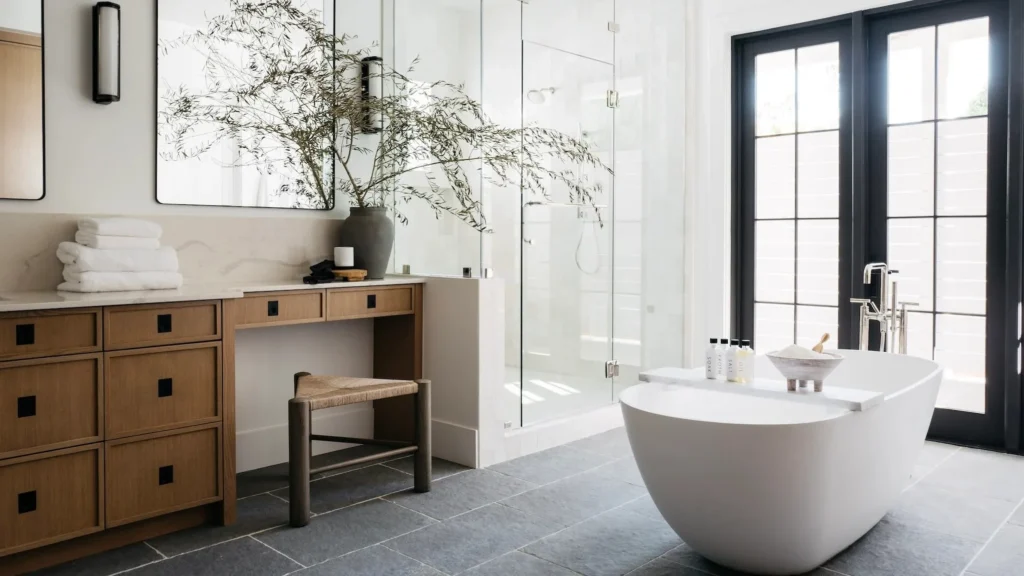
Bathroom trends shift fast. Choose wrong and the space dates in a year. Choose right and it feels calm, durable, and easy to clean.
In 2025, embrace warm neutrals, natural stone looks, walk-in showers, layered lighting, and quiet texture. Skip hard-to-maintain features, busy patterns, and gadgets that add work. Use this guide to decide with simple rules, quick tables, and at-home tests.
You will see what to keep, what to ditch, and how to align color, materials, and layout with daily life. Read, map your room, and pick with confidence.
Which bathroom trends are in or out for 2025?
Confusion is normal. You hear “spa,” “organic,” and “quiet luxury,” then see ten clashing ideas. You need one clear list.
Here’s the short answer: choose natural textures, soft shapes, warm metal accents, and practical storage. Avoid fussy tiles, whirlpool tubs you never use, and finishes that show every spot. Aim for calm surfaces and long-term comfort.
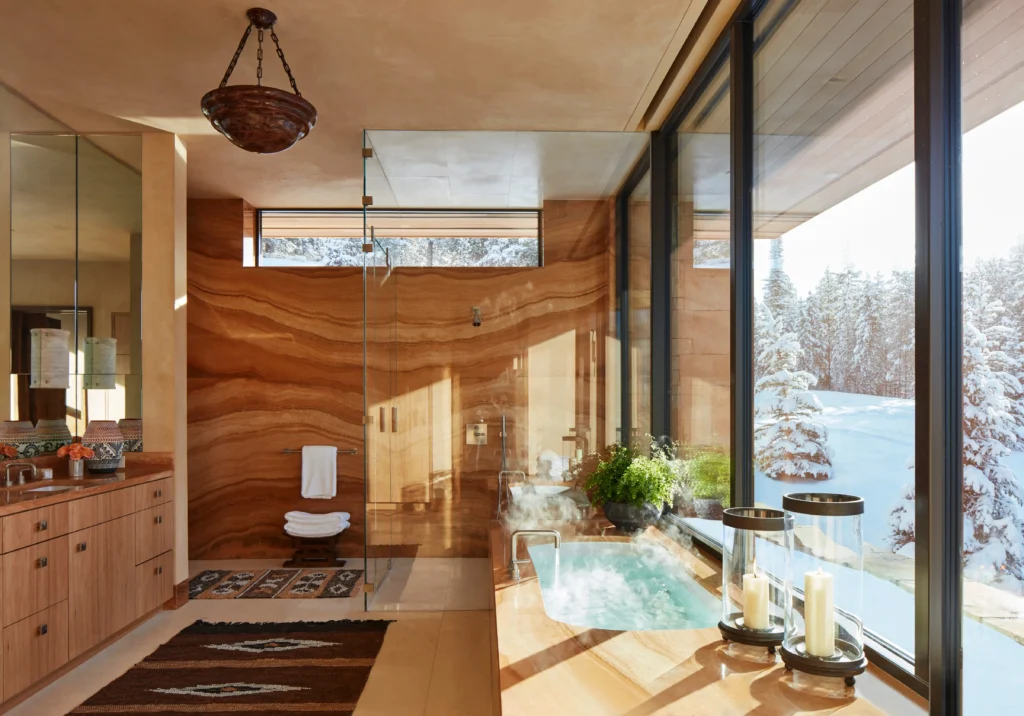
Quick trend map
| In (embrace) | Why | Out (skip) | Why |
| Walk-in showers | Easier to clean, safer | Oversized whirlpool tubs | Space + upkeep |
| Large-format tile | Fewer grout lines | Busy mosaics everywhere | Visual noise |
| Warm neutrals | Cozy, timeless | Cold blue-gray walls | Flat in night light |
| Mixed metals (2 max) | Layered look | Match-everything sets | One-note |
| Subtle texture (fluted) | Soft shadow play | Heavy ornament | Dust + dating |
How to decide
- Test cleaning time on samples.
- View colors at night under your bulbs.
- Prioritize upgrades you touch daily: shower, lighting, storage.
Should I replace a tub with a walk-in shower?
You want spa feel and daily ease. A roomy shower gives both. A tub takes space and water. Some homes still need a tub for bathing kids.
If you rarely soak, a walk-in shower is worth it. Add a bench, niches, and a handheld. Keep at least one tub somewhere in the home if resale matters in your market.
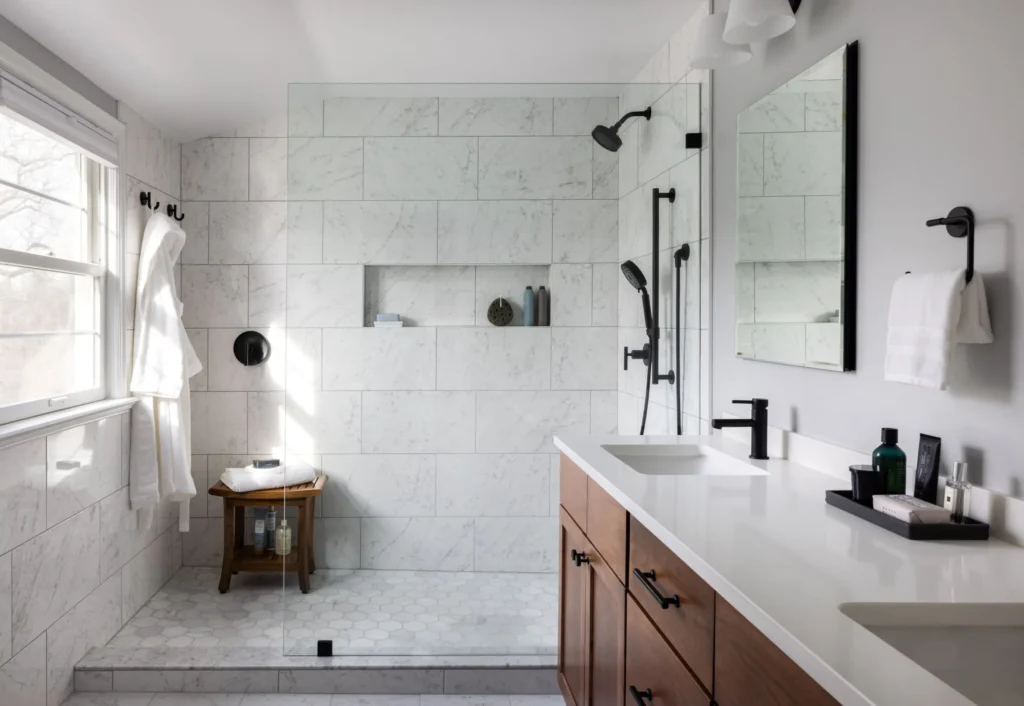
Pros and cons
| Choice | Pros | Cons |
| Walk-in shower | Space efficient; safer entry; faster cleaning | No soaking |
| Tub-shower combo | Flexible for families; budget friendly | Curtain/door clutter |
| Standalone tub | Statement piece | Needs space; low use for many |
Planning notes
- Aim for 36–42″ clear width; add a bench if space allows.
- Use a curbless pan for easy entry if structure permits.
- Place niches away from the main spray to reduce soap scum.
Is wood-look tile falling out of favor now?
It still works in some spaces, but heavy plank prints can read dated. The eye now prefers quieter stone or mineral looks with soft movement and matte finishes.
Choose wood-look only if it is subtle and warm, with low contrast and tight grout. For most baths, large stone-look tiles or micro-textures feel fresher and clean faster.
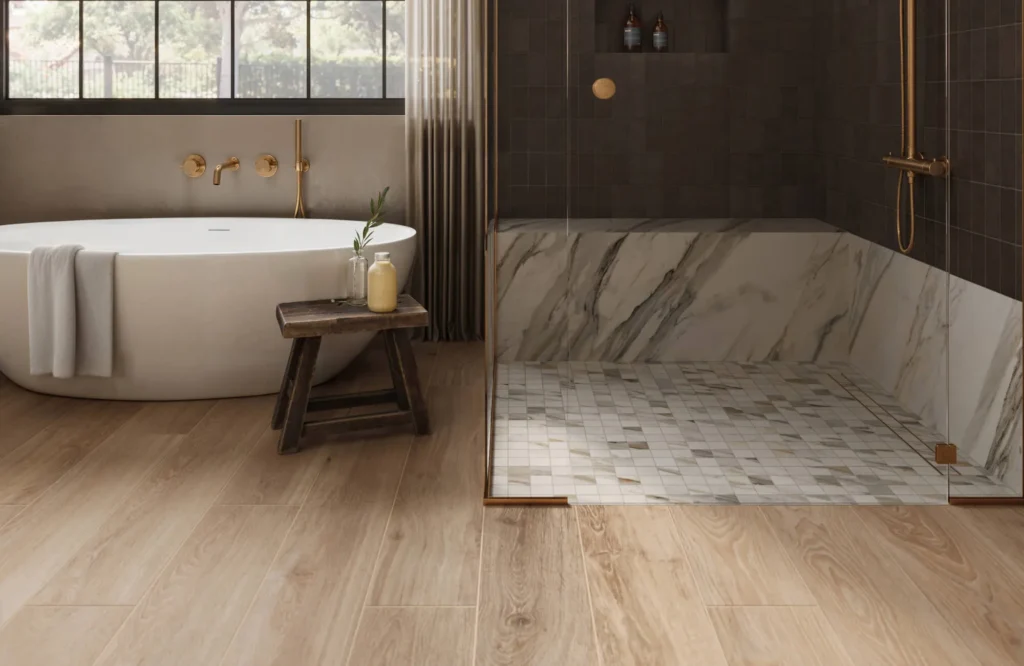
Selection guide
| Look | Best use | Keep in mind |
| Stone-look (limestone, travertine, quartzite) | Floors & walls | Large format = fewer grout lines |
| Micro-texture concrete-look | Floors | Great with warm metals |
| Subtle wood-look | Powder rooms | Pick low-contrast print |
Maintenance tip
Choose rectified large-format tile and a grout color close to the tile. Seal cement-based grout or use epoxy grout in wet zones for better stain resistance.
What tile sizes look modern in small bathrooms?
Small rooms love big tiles. Fewer lines mean a larger feel. Use 12×24, 24×24, or 24×48 on floors and walls if the layout allows.
Keep grout thin. Run tiles vertically to lift walls in short rooms. Use the same floor and wall color family to stretch space and calm the field.
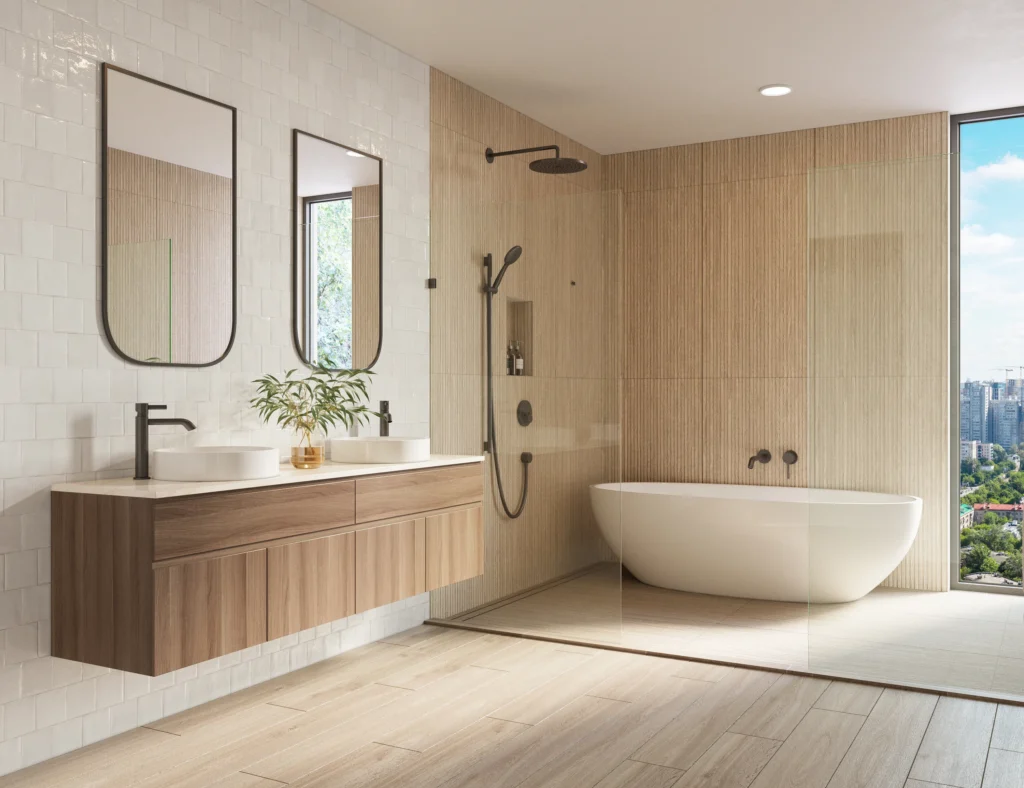
Size and layout table
| Area | Modern size | Direction |
| Main floor | 12×24 or 24×24 | Long edge with the longest wall |
| Shower walls | 12×24, 24×48 | Stack or ⅓ offset; vertical adds height |
| Niche | Slab or small matching tile | Align with grout lines |
Grout rules
Match grout to tile. Use narrow joints where allowed. Slope shower pans properly so large tiles still drain without lippage.
Which colors make bathrooms feel warm, not dated?
Warm neutrals lead: soft white, warm beige, greige, clay-tinted taupe. They glow under night light and pair with stone and wood. Cold blue-gray can look flat after sunset.
Use a simple palette: light walls, warm floor, one accent. Add depth with texture, not heavy pattern. Keep metals warm or neutral and repeat them.
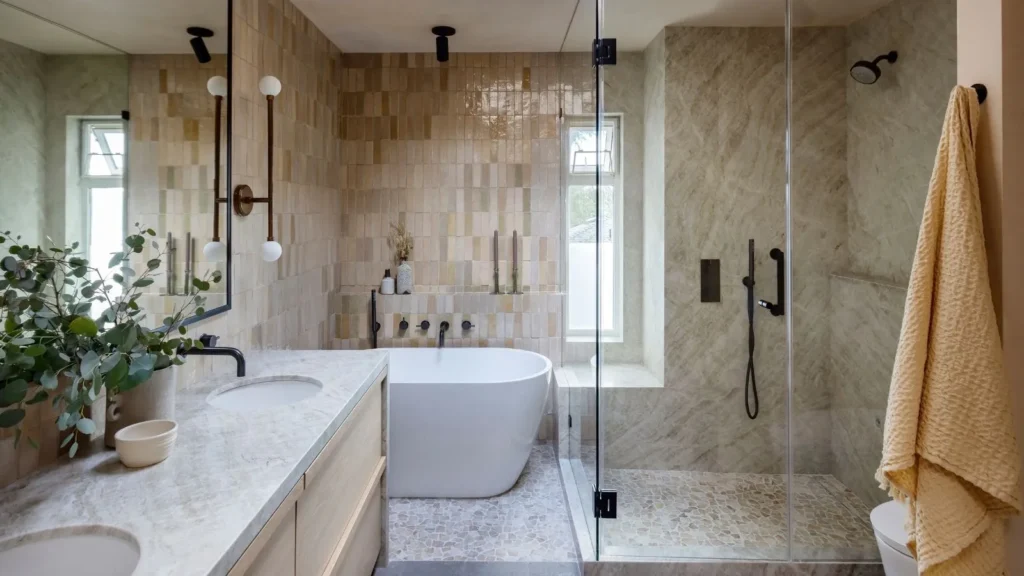
Simple palette planner
| Goal | Walls | Floor | Accent |
| Calm spa | Soft white | Warm stone-look | Brushed nickel |
| Cozy modern | Warm greige | Mid beige tile | Light oak |
| Quiet luxury | Clay taupe | Honed limestone look | Brushed brass |
Testing method
Paint two swatches on adjacent walls, near tile and mirror. Check at night with your bulbs. Pick the one that stays calm and skin-friendly.
Do bold marbles look timeless or too trendy?
Strong veining is dramatic. It can date fast if overused. In small doses, it sings. In large fields, it can overwhelm and show water spots.
If you love bold stone, focus it on one zone: vanity top or a shower feature wall. Keep all other surfaces quiet and matte so the room breathes.
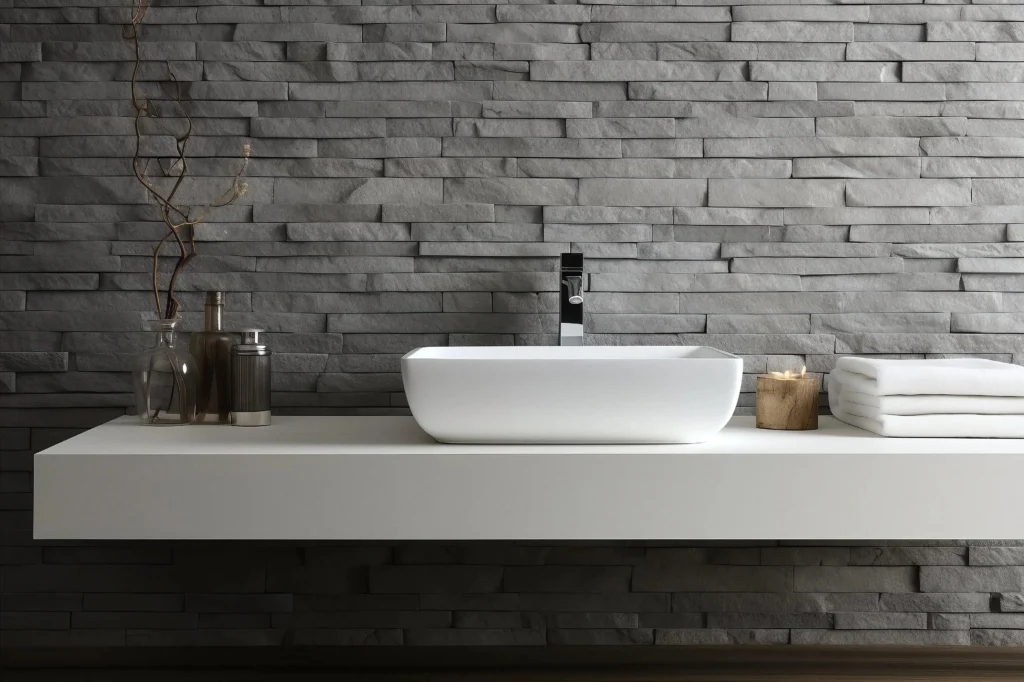
Placement ideas
- One book-matched shower wall; plain side walls.
- Statement vanity slab; simple backsplash.
- Marble threshold; calm large tiles elsewhere.
Care basics
Seal natural stone and wipe after each shower. Consider porcelain look-alikes for easier upkeep while keeping the drama.
Should I mix metals like black and brass?
Yes—within limits. Two finishes look layered; three look messy. Black and brushed brass pair well with warm neutrals. Nickel blends with cool stone and stainless fixtures.
Repeat each finish at least twice so it feels intentional. For example: black mirror + black pulls, brass sconces + brass towel bars.
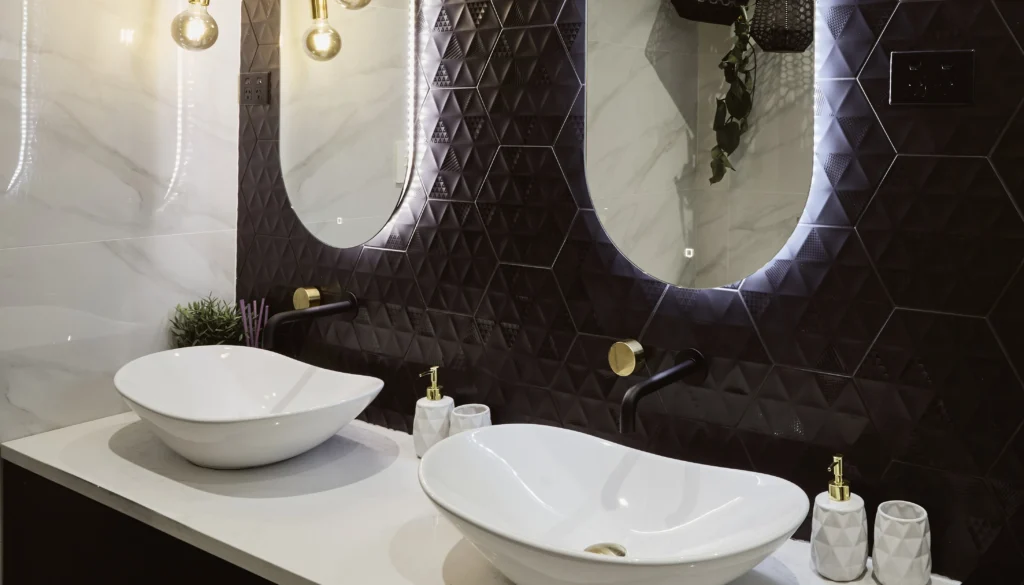
Mix map
| Base finish | Accent finish | Use like this |
| Matte black | Satin brass | Mirror + pulls / sconces + bars |
| Brushed nickel | Matte black | Faucet + shower set / mirror frame |
| Satin brass | Brushed nickel | Sconces + bars / faucet + drain |
Do/Don’t
- Do keep drains and visible valves matching the faucet.
- Do use same finish family across shower trims.
- Don’t mix glossy with matte of the same color in one sight line.
What vanity styles feel current and maximize storage?
Floating vanities read modern and open the floor. Furniture-style vanities with legs feel classic. Deep drawers beat many doors for daily use.
Choose drawers for hair tools and bottles, a tall compartment for cleaners, and a tilt-out for small items. Use a shallow top drawer with U-cut for the trap.
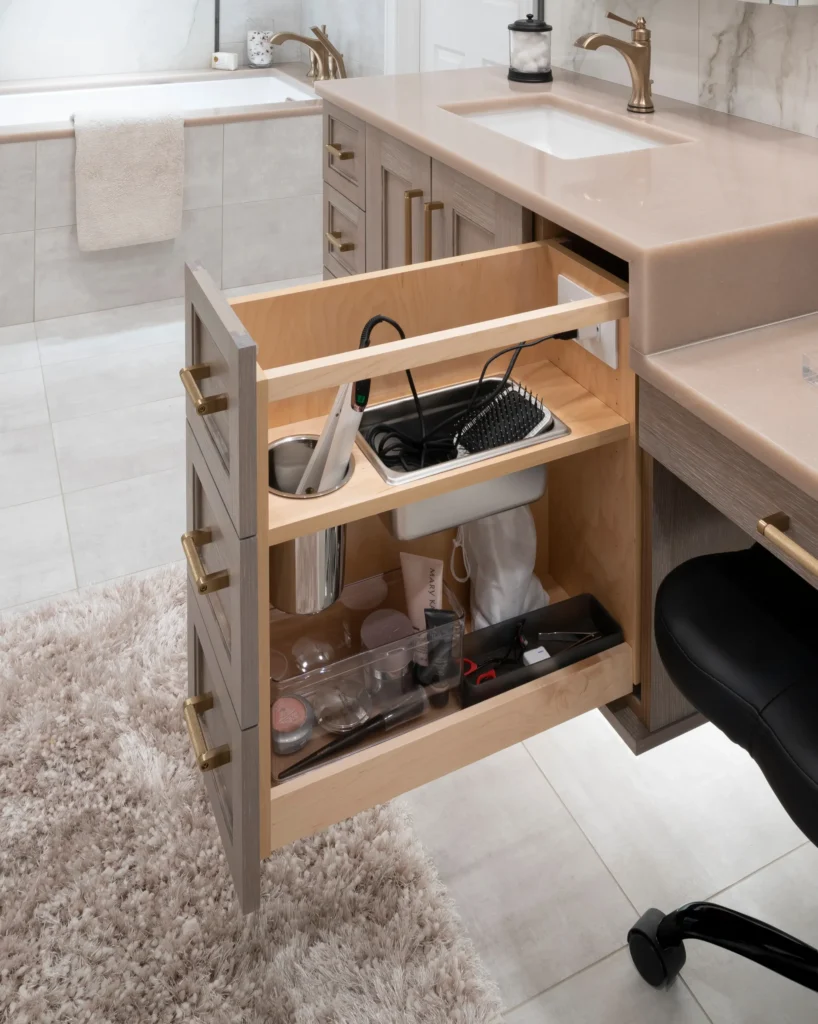
Storage planner
| Item | Best spot | Tip |
| Bottles & tall cans | Deep drawer (8–12″) | Use dividers |
| Hair tools | Deep drawer with heat-safe bin | Add outlet inside |
| Small items | Tilt-out or shallow top drawer | Trays prevent roll |
Size notes
Keep vanity depth 21–22″ in small baths, 24″ in larger ones. Leave 15–18″ clearance from the toilet side edge for comfort.
What lighting layers work best for mirror and shower?
Great light = great skin tone + safe showering. Use three layers: overhead ambient, mirror task, and shower lighting. Warm-neutral color temperature keeps faces natural.
Place vertical lights on both sides of the mirror at eye level. Add a dimmable ceiling light and a waterproof shower light. Put everything on separate switches.
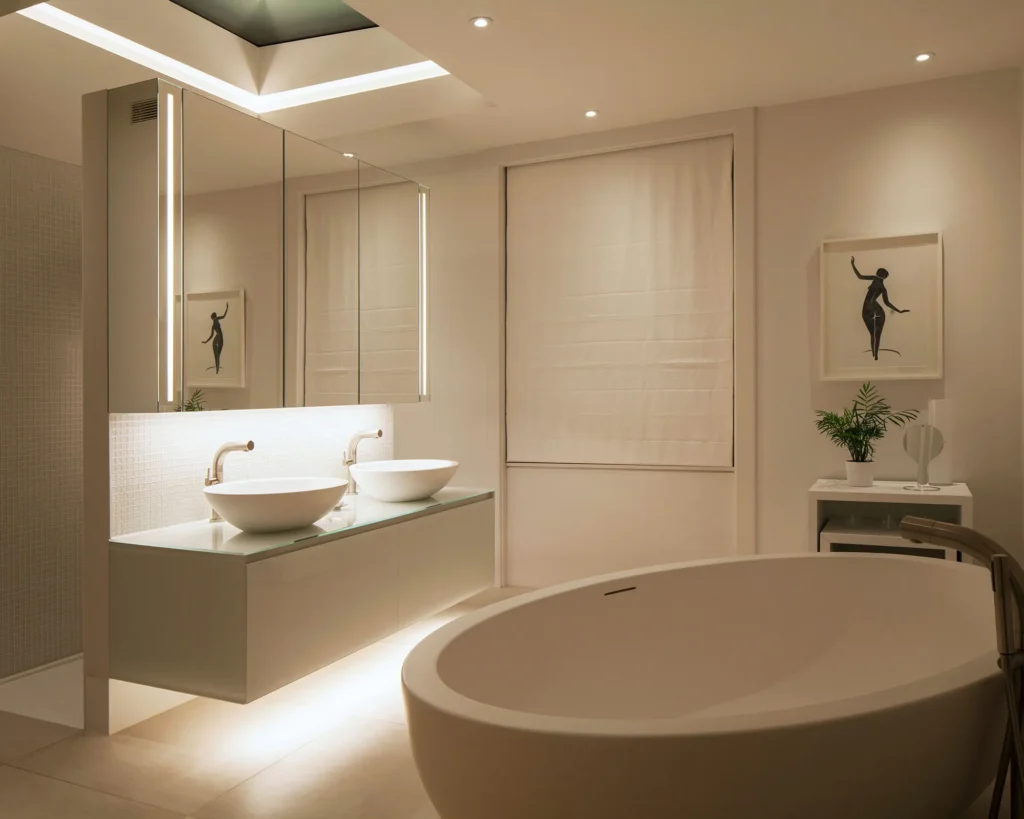
Layer plan
| Layer | Fixture | Placement |
| Task | Pair of sconces | 60–66″ off floor, 24–40″ apart |
| Ambient | Ceiling light | Centered; dimmable |
| Shower | Wet-rated downlight | Aim away from glass to reduce glare |
Color temperature
Use ~2700–3000K for warmth and healthy skin tone. Keep all fixtures similar so colors stay consistent from mirror to shower.
Which upgrades deliver the best resale value in 2025?
Buyers value cleanable surfaces, good storage, and a fresh shower more than niche gadgets. Spend where hands and eyes land every day.
Prioritize a quality shower system, large-format tile, floating or furniture-style vanity with drawers, and layered lighting. Keep colors neutral and add warmth with texture and metals.
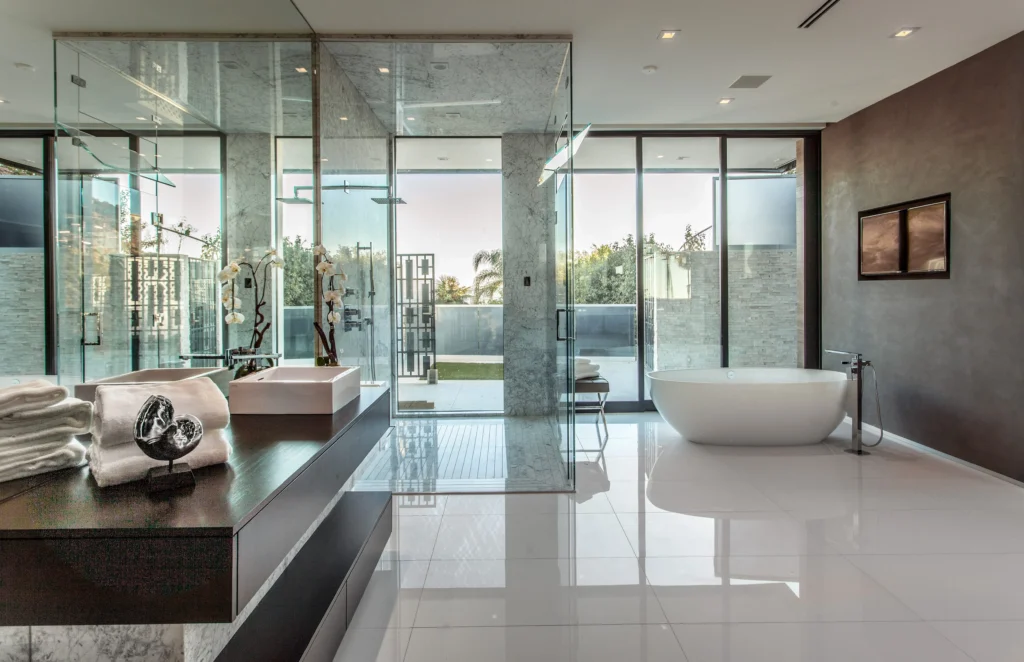
Value checklist
- Walk-in shower with niche and bench.
- Large-format floor and wall tile.
- Deep-drawer vanity with quiet close.
- Neutral, warm palette and two metal finishes.
- Reliable, quiet ventilation.
Budget allocation table
| Category | Share of budget | Notes |
| Wet zone (shower/tub) | 35–45% | Waterproofing first |
| Tile & surfaces | 20–30% | Large format saves cleaning time |
| Vanity & storage | 15–20% | Drawers > doors |
| Lighting & electrical | 8–12% | Separate switches, dimmers |
| Paint & finishes | 5–8% | Satin or eggshell on walls |
Conclusion
Choose calm surfaces, layered light, and storage you will use daily. Test colors at night. Keep metals to two. Build a shower you love. The result will last.
FAQ
Are walk-in showers replacing bathtubs in most remodels?
Often yes. Many homeowners favor larger showers with benches and niches. Keep one tub in the home if local buyers expect it for resale or bathing kids.
What bathroom colors are trending for 2025?
Warm neutrals lead: soft white, greige, clay-tinted taupe. They look good under night light and pair well with warm metals, stone looks, and light wood.
Is brass still in style for bathroom hardware?
Yes. Brushed or satin brass adds warmth without glare. Use it with black or nickel, but limit to two finishes total so the room stays ordered.
What tile size works best in small bathrooms?
Larger tiles make rooms feel bigger by cutting grout lines. Try 12×24 or 24×24 on floors and 12×24 or 24×48 on walls with matching grout.
Are jetted whirlpool tubs outdated now?
For many homes, yes. They need space, power, and cleaning. If you rarely soak, a walk-in shower gives more daily value and is easier to maintain.
Are fluted vanities still trending?
Yes, but use with restraint. Flutes add soft texture and shadow. Keep them on one feature—vanity or wall—so cleaning stays simple and the look lasts.
Is avocado green actually back in bathrooms?
A softer, earthy green is back. Use it as paint or tile accents with warm neutrals and stone. Avoid full suites of colored fixtures to prevent dating.
How can I make a small bathroom feel bigger without moving walls?
Use large-format tiles, light walls, a floating vanity, and clear glass. Keep one palette across floor and walls. Add bright, even lighting at the mirror.

